Welcome, Nerds! Welcome to the second part in the Nerds On Earth History of the Atomic Knights!
A Brief History of the Atomic Knights, Part II: And Then It Went Crazy
When we last left our heroes (Part 1), they had discovered nuke-proof armor, overthrown the local warlord, and banded together to be a force for law and order and an unlawful post-apocalyptic society. Unfortunately for the Atomic Knights, “law and order” in this context means less giving out parking tickets and more dealing with giant crystal monsters…

A band of de-evolved humans in a New York City bomb shelter…
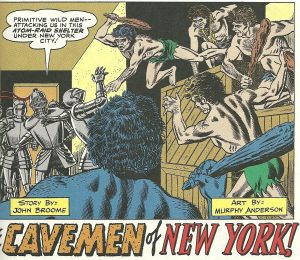
A bunch of psychic Id monsters…
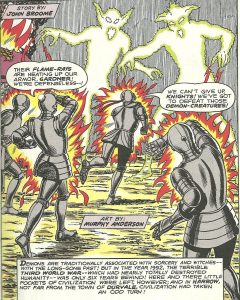
Actual, literal Atlanteans from actual, literal Atlantis…
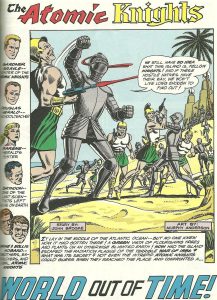
Space invaders out to steal Earth’s metal…

Mole people intent on blacking out the sun…

A bunch of walking, telepathic plants that throw explosive berries…
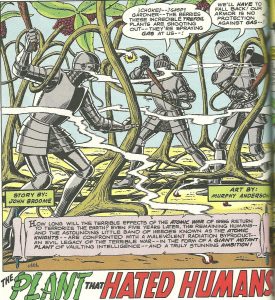
Post-apocalyptic Hitler…
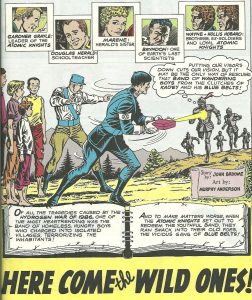
And my personal favorite, the King of New Orleans.
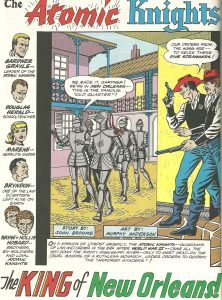
What’s actually pretty astounding about Atomic Knights is not just the sheer variety of the villains, or even the crazy, inventive ways the Knights go about fighting them: it’s also a clinic on world building. Atomic Knights has a grip on its own internal canon that other, more well-known comics could only dream of. For example, take the most iconic part of the series: the suits of armor. The suits are vital, both within the story and without. If the knights didn’t have the armor, they’re just some dudes slowly dying of radiation sickness. With them, they can be heroes. But as the series goes on, you see the Knights wearing fewer pieces of the armor. They’ve lost a greave here, or a gauntlet there. You really believe that these people are going around the country having these dangerous adventures.
Or look elsewhere. Remember those ambulatory plant people? Well, turns out they’re called the Trefoils, and this dude named Henderson decided to cultivate them, presumably because what the hell else is there to do? Anyway, Henderson shows off his floral monstrosity to Bryndon, who’s so psyched he runs back to tell Gardner. Then Gardner lays down one of my favorite moments of the entire series:
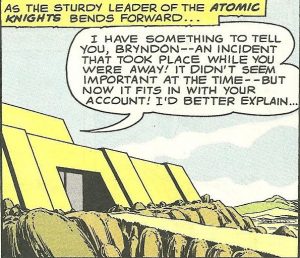
That “strange incident” that Gardner didn’t think was important? Yeah, this is it:
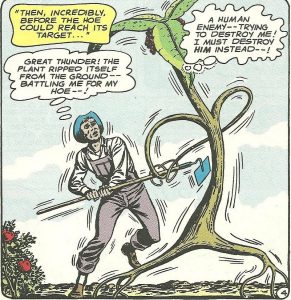
Walk through this one with me, Nerds. Gardner Grayle, de facto leader of this little community, professional soldier, heard about a giant plant attacking a farmer, and DIDN’T THINK IT WAS IMPORTANT. That kills me every time. The crazy thing? Or, sorry, the crazier thing? It makes perfect sense. Earlier in the series, you’d get the Knights leaping into action at the first sign of trouble. “A note on a kite? Might be a crystal monster!” “A weird new continent? Well that bears checking out!” But by the middle of the run, they’re so much more jaded. “Walking plants? Let me know when something actually important happens.” There’s a point where one of those psychic Id monsters shoots radiation bolts at Doug Herald, and he just keeps it to himself.
But that’s only the first part of this series’ incredible consistency. Because those plants? They show up again.
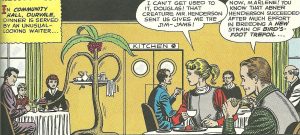
And again.

What you’re seeing here is Broome and Anderson meticulously crafting a world that always, always, always follows its own rules, even if those rules are psychotic. For example, those giant Dalmatians?
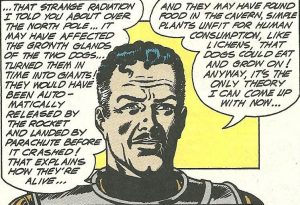
Nothing in that passage is any more or less fantastic than anything in this comic, and that’s a feat. Broome and Anderson have essentially created a comic that lays all its cards on the table from the start. If you’re willing to believe any part of the world they’ve built, you’ll be able to believe all of it. And that means they get to go nuts.
For example, a lot of the threats the Knights face aren’t exactly punchable; sure, the Atlanteans are good for a brawl or two, and those Trefoils are always down for a scrap, but the Crystal Monster? The Id monsters? Those require a more cerebral approach. Which leads to great scenes like this one, where the Knights use the CM’s greed against it:
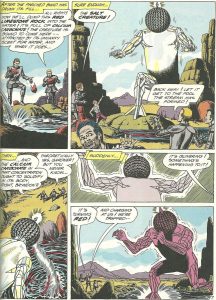
Or you get scenes like during the episode in New Orleans, where the Knights find out a King has brainwashed a staff of doctors (doctors, obviously, having great worth in post-apocalyptic America). Imagine you’re John Broome. You have to figure out a way to get your characters to free a city full of mind-controlled surgeons. What are you going to do?
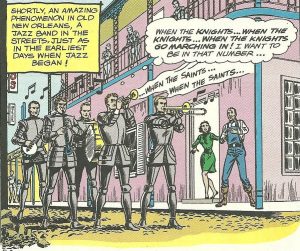
If you answered “smooth jazz,” you are either John Broome or you’re lying.
Atomic Knights might just be a curiosity now, another product of DC’s Silver Age, but trust me on this–it’s a comic that wasn’t afraid to go places that other comics wouldn’t dare to go, and it very few comics have gone there since. It’s pure fun. And, as we’ll see in the coming weeks, it’s the fodder for some pretty classic stories in their own right.
That’s all the time we have for today, Nerds, but remember: it’s a dangerous world out there. Watch out for mole people, and remember:
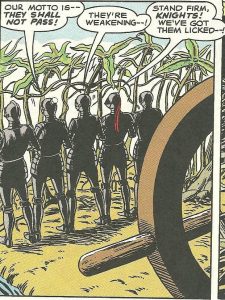
They shall not pass!

